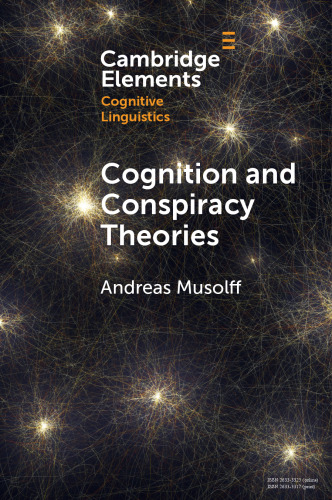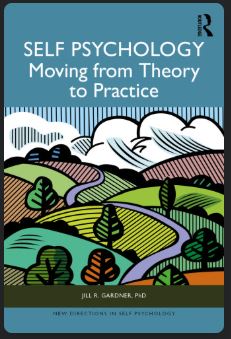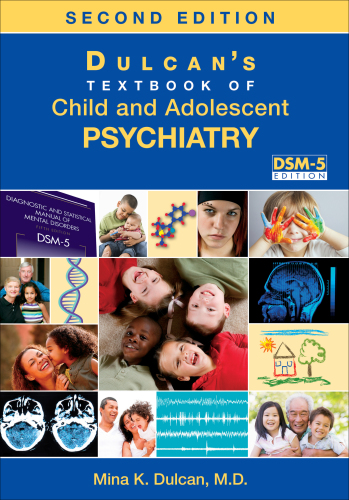If purchased from FlatWorld, the publisher, this version includes Online Access, Homework and a Print copy via a redeemable code shipped with the print book. This is not available from other sellers Introduction to Psychology is a concise and conceptual introduction to the subject. Stangor focuses on behavior and empiricism throughout the text in an effort to better organize the material with fewer chapters, making it ideal for a one-semester introductory course.
چکیده فارسی
اگر از FlatWorld، ناشر خریداری شده باشد، این نسخه شامل دسترسی آنلاین، تکالیف خانگی و یک نسخه چاپی از طریق کد قابل بازخرید همراه با کتاب چاپی است. این مطلب توسط فروشندگان دیگر در دسترس نیست. مقدمه روانشناسی یک مقدمه مختصر و مفهومی برای موضوع است. Stangor در تلاش برای سازماندهی بهتر مطالب با فصل های کمتر، بر رفتار و تجربه گرایی در سراسر متن تمرکز می کند و آن را برای یک دوره مقدماتی یک ترم ایده آل می کند.
ادامه ...
بستن ...
Ebook details:
عنوان: Introduction to Psychology v3.0
By: Charles Stangor
- Publisher: Flatworld
-
Print ISBN: 9781453387238, 1453387234
Print ISBN: 9781453387238, 1453387234
-
eText ISBN: 9781453387245, 1453387242
eText ISBN: 9781453387245, 1453387242
- Copyright year: 2017
حجم: 170 Mb
فرمت: Image pdf with ocr
ادامه ...
بستن ...
Brief Contents
Contents
About the Author
Acknowledgments
Preface
Chapter 1: Introducing Psychology
1.1: Psychology as a Science
The Problem of Intuition
Why Psychologists Rely on Empirical Methods
Levels of Explanation in Psychology
The Challenges of Studying Psychology
1.2: The Evolution of Psychology: History, Approaches, and Questions
Early Psychologists
Structuralism: Introspection and the Awareness of Subjective Experience
Functionalism and Evolutionary Psychology
Psychodynamic Psychology
Behaviorism and the Question of Free Will
The Cognitive Approach and Cognitive Neuroscience
Social-Cultural Psychology
The Many Disciplines of Psychology
1.3: Chapter Summary
Endnotes
Chapter 2: Psychological Science
2.1: Psychologists Use the Scientific Method to Guide Their Research
The Scientific Method
Laws and Theories as Organizing Principles
The Research Hypothesis
Conducting Ethical Research
Ensuring That Research Is Ethical
Research With Animals
2.2: Psychologists Use Descriptive, Correlational, and Experimental Research Designs to Understand B
Descriptive Research: Assessing the Current State of Affairs
Correlational Research: Seeking Relationships Among Variables
Experimental Research: Understanding the Causes of Behavior
2.3: You Can Be an Informed Consumer of Psychological Research
2.4: Chapter Summary
Endnotes
Chapter 3: Brains, Bodies, and Behavior
3.1: The Neuron Is the Building Block of the Nervous System
Neurons Communicate Using Electricity and Chemicals
Neurotransmitters: The Body’s Chemical Messengers
3.2: Our Brains Control Our Thoughts, Feelings, and Behavior
The Old Brain: Wired for Survival
The Cerebral Cortex Creates Consciousness and Thinking
Functions of the Cortex
The Brain Is Flexible: Neuroplasticity
3.3: Psychologists Study the Brain Using Many Different Methods
Lesions Provide a Picture of What Is Missing
Recording Electrical Activity in the Brain
Peeking Inside the Brain: Neuroimaging
3.4: Putting It All Together: The Nervous System and the Endocrine System
Electrical Control of Behavior: The Nervous System
The Body’s Chemicals Help Control Behavior: The Endocrine System
3.5: Chapter Summary
Endnotes
Chapter 4: Sensing and Perceiving
4.1: We Experience Our World Through Sensation
Sensory Thresholds: What Can We Experience?
Measuring Sensation
4.2: Seeing
The Sensing Eye and the Perceiving Visual Cortex
Perceiving Color
Perceiving Form
Perceiving Depth
Perceiving Motion
4.3: Hearing
The Ear
Hearing Loss
4.4: Tasting, Smelling, and Touching
Tasting
Smelling
Touching
Experiencing Pain
4.5: Accuracy and Inaccuracy in Perception
How the Perceptual System Interprets the Environment
Illusions
The Important Role of Expectations in Perception
4.6: Chapter Summary
Endnotes
Chapter 5: Consciousness, Body Rhythms, and Mental States
5.1: Sleeping and Dreaming Revitalize Us for Action
Sleep Stages: Moving Through the Night
Sleep Disorders: Problems in Sleeping
The Heavy Costs of Not Sleeping
Dreams and Dreaming
5.2: Altering Consciousness With Psychoactive Drugs
Speeding Up the Brain With Stimulants: Caffeine, Nicotine, Cocaine, and Amphetamines
Slowing Down the Brain With Depressants: Alcohol, Barbiturates and Benzodiazepines, and Toxic Inhala
Opioids: Opium, Morphine, Heroin, and Codeine
Hallucinogens: Cannabis, Mescaline, and LSD
Why We Use Psychoactive Drugs
5.3: Altering Consciousness Without Drugs
Changing Behavior Through Suggestion: The Power of Hypnosis
Reducing Sensation to Alter Consciousness: Sensory Deprivation
Meditation
5.4: Chapter Summary
Endnotes
Chapter 6: Growing and Developing Across the Lifespan
6.1: Conception and Prenatal Development
The Zygote
The Embryo
The Fetus
How the Environment Can Affect the Vulnerable Fetus
6.2: Infancy and Childhood: Exploring and Learning
The Newborn Arrives With Many Behaviors Intact
Cognitive Development During Childhood
Social Development During Childhood
Knowing the Self: The Development of the Self-Concept
Successfully Relating to Others: Attachment
6.3: Adolescence: Developing Independence and Identity
Physical Changes in Adolescence
Cognitive Development in Adolescence
Social Development in Adolescence
Developing Moral Reasoning: Kohlberg’s Theory
6.4: Early and Middle Adulthood: Building Effective Lives
Physical and Cognitive Changes in Early and Middle Adulthood
Menopause
Social Changes in Early and Middle Adulthood
6.5: Late Adulthood: Aging, Retiring, and Bereavement
Cognitive Changes during Aging
Neurocognitive Disorder and Alzheimer’s Disease
Social Changes During Aging: Retiring Effectively
Death, Dying, and Bereavement
6.6: Chapter Summary
Endnotes
Chapter 7: Learning
7.1: Learning by Association: Classical Conditioning
Pavlov Demonstrates Conditioning in Dogs
The Persistence and Extinction of Conditioning
The Role of Nature in Classical Conditioning
7.2: Changing Behavior Through Reinforcement and Punishment: Operant Conditioning
How Reinforcement and Punishment Influence Behavior: The Research of Thorndike and Skinner
Creating Complex Behaviors Through Operant Conditioning
7.3: Learning by Insight and Observation
Observational Learning: Learning by Watching
7.4: Using the Principles of Learning to Understand Everyday Behavior
Using Classical Conditioning in Advertising
Reinforcement in Social Dilemmas
7.5: Chapter Summary
Endnotes
Chapter 8: Remembering and Judging
8.1: Memories as Types and Stages
Explicit Memory
Implicit Memory
Stages of Memory: Sensory, Short-Term, and Long-Term Memory
Sensory Memory
Short-Term Memory
8.2: How We Remember: Cues to Improving Memory
Encoding and Storage: How Our Perceptions become Memories
Using the Contributions of Hermann Ebbinghaus to Improve Your Memory
Retrieval
The Structure of LTM: Categories, Prototypes, and Schemas
The Biology of Memory
8.3: Accuracy and Inaccuracy in Memory and Cognition
Source Monitoring: Did It Really Happen?
Schematic Processing: Distortions Based on Expectations
Misinformation Effects: How Information That Comes Later Can Distort Memory
Overconfidence
Heuristic Processing: Availability and Representativeness
Salience and Cognitive Accessibility
Counterfactual Thinking
8.4: Chapter Summary
Endnotes
Chapter 9: Intelligence and Language
9.1: Defining and Measuring Intelligence
General (g) versus Specific (s) Intelligences
Measuring Intelligence: Standardization and the Intelligence Quotient
The Biology of Intelligence
Is Intelligence Nature or Nurture?
9.2: The Social, Cultural, and Political Aspects of Intelligence
Extremes of Intelligence: Intellectual Disability and Giftedness
Extremely Low Intelligence
Extremely High Intelligence
Gender Differences in Intelligence
Racial Differences in Intelligence
9.3: Communicating With Others: The Development and Use of Language
The Components of Language
The Biology and Development of Language
Learning Language
How Children Learn Language: Theories of Language Acquisition
Bilingualism and Cognitive Development
Can Animals Learn Language?
Language and Perception
9.4: Chapter Summary
Endnotes
Chapter 10: Emotions and Motivation: Happiness, Stress, Health, Eating, and Sex
10.1: The Experience of Emotion
The Cannon-Bard and James-Lange Theories of Emotion
The Two-Factor Theory of Emotion
Communicating Emotion
10.2: Stress: The Unseen Killer
The Negative Effects of Stress
Stressors in Our Everyday Lives
Responses to Stress
Managing Stress
Emotion Regulation
10.3: Positive Emotions: The Power of Happiness
Finding Happiness through Our Connections With Others
What Makes Us Happy?
10.4: Two Fundamental Human Motivations: Eating and Mating
Eating: Healthy Choices Make Healthy Lives
Eating Disorders
Obesity
Sex: The Most Important Human Behavior
The Experience of Sex
The Many Varieties of Sexual Behavior
10.5: Chapter Summary
Endnotes
Chapter 11: Psychology in Our Social Lives
11.1: Social Cognition: Making Sense of Ourselves and Others
Perceiving Others
Forming Judgments on the Basis of Appearance: Stereotyping, Prejudice, and Discrimination
Close Relationships
Causal Attribution: Forming Judgments by Observing Behavior
Attitudes and Behavior
11.2: Interacting with Others: Helping, Hurting, and Conforming
Helping Others: Altruism Helps Create Harmonious Relationships
Why Are We Altruistic?
How the Presence of Others Can Reduce Helping
Human Aggression: An Adaptive Yet Potentially Damaging Behavior
The Ability to Aggress Is Part of Human Nature
Negative Experiences Increase Aggression
Does Viewing Violent Media Increase Aggression?
Conformity and Obedience: How Social Influence Creates Social Norms
Do We Always Conform?
11.3: Working With Others: The Costs and Benefits of Social Groups
Working in Front of Others: Social Facilitation and Social Inhibition
Working Together in Groups
Using Groups Effectively
11.4: Chapter Summary
Endnotes
Chapter 12: Personality
12.1: Personality and Behavior: Approaches and Measurement
Personality as Traits
Situational Influences on Personality
The MMPI and Projective Tests
12.2: The Origins of Personality
Psychodynamic Theories of Personality: The Role of the Unconscious
Id, Ego, and Superego
Freud’s Followers: The Neo-Freudians
Strengths and Limitations of Freudian and Neo-Freudian Approaches
Focusing on the Self: Humanism and Self-Actualization
12.3: Is Personality More Nature or More Nurture? Behavioral and Molecular Genetics
Studying Personality Using Behavioral Genetics
Studying Personality Using Molecular Genetics
Reviewing the Literature: Is Our Genetics Our Destiny?
12.4: Chapter Summary
Endnotes
Chapter 13: Defining Psychological Disorders
13.1: Psychological Disorder: What Makes a Behavior “Abnormal”?
Defining Disorder
Diagnosing Disorder: The DSM
Diagnosis or Overdiagnosis? ADHD and Autism Spectrum Disorder
Attention-Deficit/Hyperactivity Disorder (ADHD)
Autism Spectrum Disorder
13.2: Anxiety and Dissociative Disorders: Fearing the World Around Us
Generalized Anxiety Disorder
Panic Disorder
Phobias
Obsessive-Compulsive Disorders
Posttraumatic Stress Disorder (PTSD)
Dissociative Disorders: Losing the Self to Avoid Anxiety
Dissociative Amnesia and Fugue
Dissociative Identity Disorder
Explaining Anxiety and Dissociation Disorders
13.3: Depressive Disorders: Emotions as Illness
Dysthymia and Major Depressive Disorder
Bipolar Disorder
Explaining Depressive Disorders
13.4: Schizophrenia: The Edge of Reality and Consciousness
Symptoms of Schizophrenia
Explaining Schizophrenia
13.5: Personality Disorders
Borderline Personality Disorder
Antisocial Personality Disorder (APD)
13.6: Physical, Sexual, Eating, and Sleeping Disorders
Disorders Related to Physical Symptoms
Sexual Disorders
Disorders of Sexual Function
Gender Identity Disorder
Paraphilias
13.7: Chapter Summary
Endnotes
Chapter 14: Treating Psychological Disorders
14.1: Reducing Disorder by Confronting It: Psychotherapy
Psychodynamic Therapy
Humanistic Therapies
Cognitive-Behavior Therapy
Behavioral Aspects of CBT
Cognitive Aspects of CBT
Combination (Eclectic) Approaches to Therapy
14.2: Reducing Disorder Biologically: Drug and Brain Therapy
Drug Therapies
Using Stimulants to Treat ADHD
Antidepressant Medications
Antianxiety Medications
Antipsychotic Medications
Direct Brain Intervention Therapies
14.3: Reducing Disorder by Changing the Social Situation
Group, Couples, and Family Therapy
Self-Help Groups
Community Mental Health: Service and Prevention
14.4: Evaluating Treatment and Prevention: What Works?
Effectiveness of Psychological Therapy
Effectiveness of Biomedical Therapies
Effectiveness of Social-Community Approaches
14.5: Chapter Summary
Endnotes
Chapter 15: Answers to Quiz Questions
15.1: Chapter 1
15.2: Chapter 2
15.3: Chapter 3
15.4: Chapter 4
15.5: Chapter 5
15.6: Chapter 6
15.7: Chapter 7
15.8: Chapter 8
15.9: Chapter 9
15.10: Chapter 10
15.11: Chapter 11
15.12: Chapter 12
15.13: Chapter 13
15.14: Chapter 14
Index
ادامه ...
بستن ...










